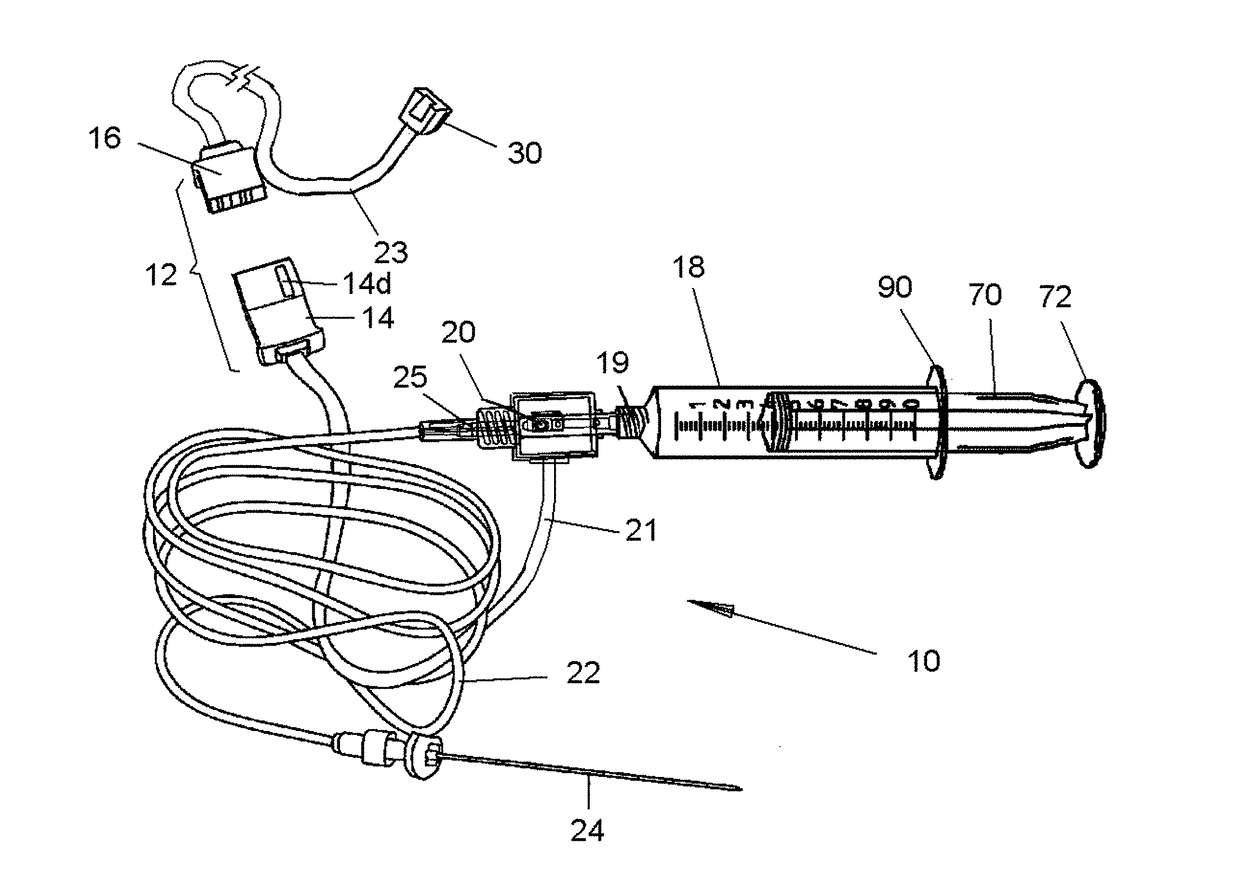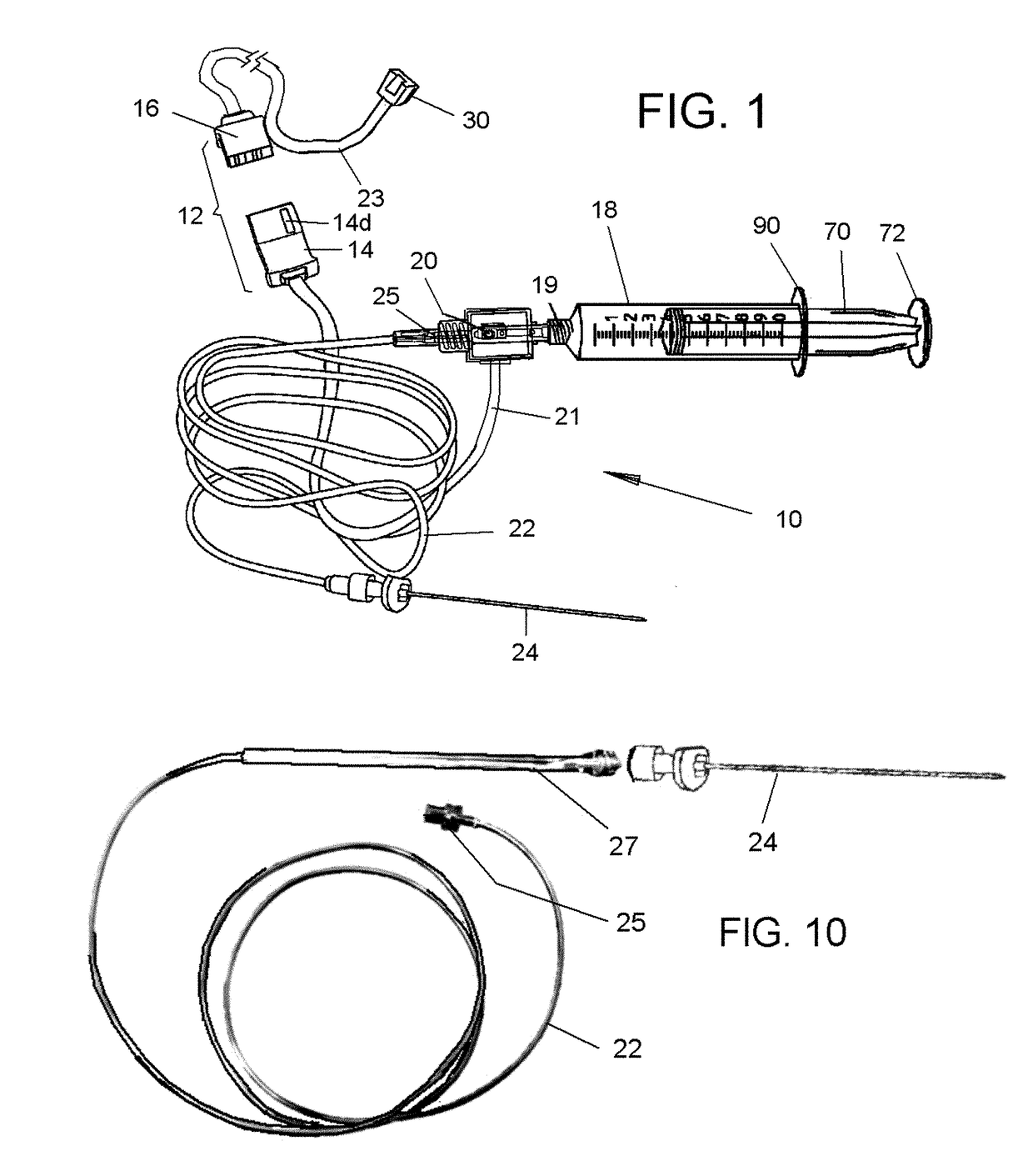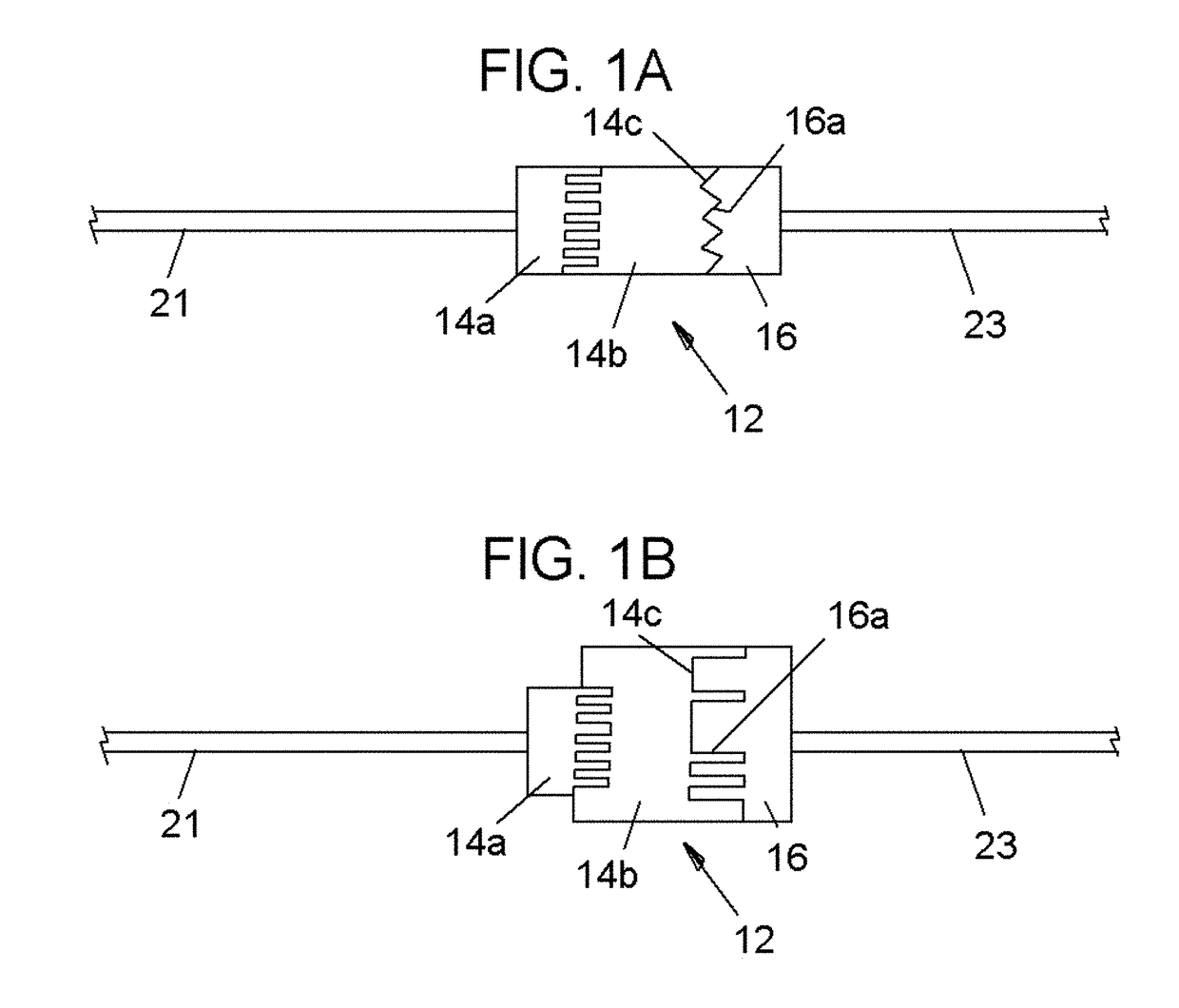Disposable assembly for drug infusion with pressure sensing for identification of and injection into fluid-filled anatomic spaces
a technology of pressure sensing and dispensing assembly, which is applied in the direction of process and machine control, instruments, eye treatment, etc., can solve the problems of unintentional pressure on the plunger, loss of fluid into the tissues, and fluid continuously exiting out of the needle within the tissues, so as to reduce the amount of injection fluid, accurate and reproducible injection, the effect of limiting pain and tissue damag
- Summary
- Abstract
- Description
- Claims
- Application Information
AI Technical Summary
Benefits of technology
Problems solved by technology
Method used
Image
Examples
Embodiment Construction
[0063]Referring now to the drawings, in which like reference numerals are used to refer to the same or similar elements, FIG. 1 shows as disposables assembly 10, made up of various parts that are permanently connected to each other and are supplied in sterile package for single use in conjunction with a computer-controlled drug delivery instrument or drive unit 50 shown in FIGS. 2 and 3, which together form a system schematically shown in FIG. 4.
[0064]The subject invention pertains to a system for determining location and delivering drugs in fluid-filled tissues such as the epidural space, intra-articular space, globe of the eye, cysts, vessels and other fluid-filled spaces of the body. The injection of such drugs, such as, but not limited to local anesthetic solutions as, cortico-steroids, hydroxyapatite, joint replenishment drugs, sclerosing agents and other drugs are typically injected into a fluid-filled tissue space for therapeutic purposes. Importantly, due to a variety of fac...
PUM
 Login to View More
Login to View More Abstract
Description
Claims
Application Information
 Login to View More
Login to View More - R&D
- Intellectual Property
- Life Sciences
- Materials
- Tech Scout
- Unparalleled Data Quality
- Higher Quality Content
- 60% Fewer Hallucinations
Browse by: Latest US Patents, China's latest patents, Technical Efficacy Thesaurus, Application Domain, Technology Topic, Popular Technical Reports.
© 2025 PatSnap. All rights reserved.Legal|Privacy policy|Modern Slavery Act Transparency Statement|Sitemap|About US| Contact US: help@patsnap.com



